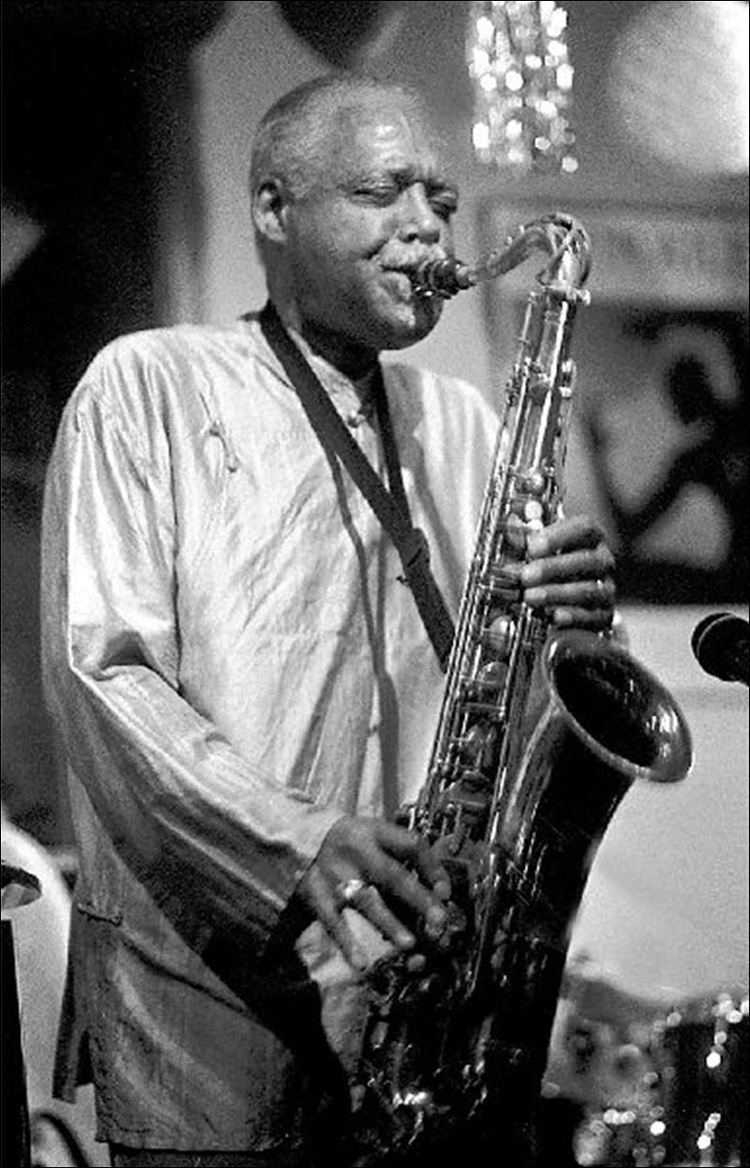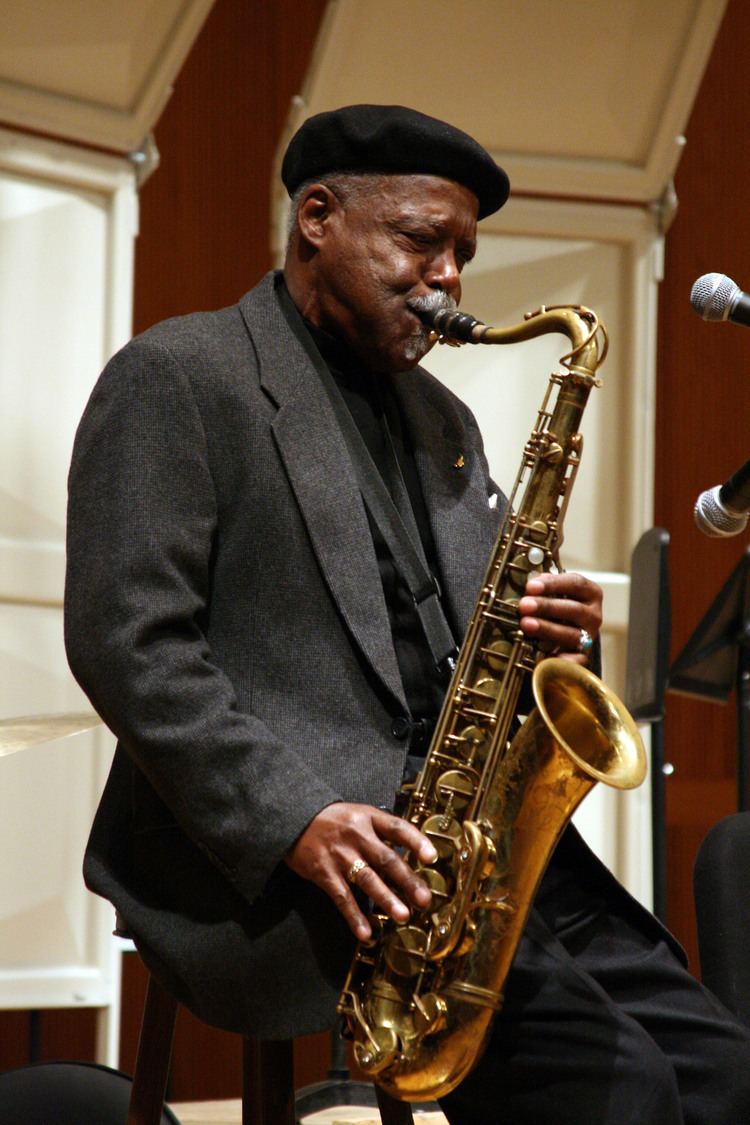Birth name David Newman, Jr. Instruments Saxophone, flute Role Musician | Occupation(s) Musician, songwriter Name David Newman | |
 | ||
Born February 24, 1933Corsicana, Texas ( 1933-02-24 ) Website www.davidfatheadnewman.com Education Lincoln High School, Jarvis Christian College Awards Juno Award for Blues Album of the Year, Rhythm and Blues Foundation Pioneer Award Similar People | ||
DAVID fathead NEWMAN red top.mpg
Tenor Battle: Tina Brooks & David Fathead Newman with Ray Charles Orchestra
David "Fathead" Newman (February 24, 1933 – January 20, 2009) was an American jazz and rhythm-and-blues saxophonist who made numerous recordings as a session musician and leader, but is best known for his work as a sideman on seminal 1950s and early 1960s recordings by singer-pianist Ray Charles.
Contents
- DAVID fathead NEWMAN red topmpg
- Tenor Battle Tina Brooks David Fathead Newman with Ray Charles Orchestra
- Early life and career
- Sideman and soloist with Ray Charles
- Later life and career
- Death
- Songs
- References
The All Music Guide to Jazz wrote that “there have not been many saxophonists and flutists more naturally soulful than David “Fathead” Newman,” and that “one of jazz’s and popular music’s great pleasures is to hear, during a vocalist’s break, the gorgeous, huge Newman tones filling the space . . . ." Newman is sometimes cited as a leading exponent of the so-called “Texas Tenor” saxophone style, which refers to the many big-toned, bluesy jazz tenor players from that state.
Early life and career

Newman was born in Corsicana, Texas, on February 24, 1933, but grew up in Dallas, where he studied first the piano and then the saxophone. According to one account, he got his nickname “Fathead” in school when “an outraged music instructor used it as an epithet after catching Mr. Newman playing a Sousa march from memory rather than from reading the sheet music, which rested upside down on the stand.”

Inspired by the jump blues bandleader Louis Jordan, Newman took up the alto saxophone in the seventh grade, and was mentored by former Count Basie saxophonist Buster Smith. He went off to Jarvis Christian College on a music and theology scholarship but quit school after three years and began playing professionally, mostly jazz and blues, with a number of musicians, including Smith, pianist Lloyd Glenn, and guitarist bandleaders Lowell Fulson and T-Bone Walker.
Sideman and soloist with Ray Charles
Newman met and befriended Ray Charles in early 1951 when Charles was playing piano and singing with the Lowell Fulson band. Newman joined Charles’ band in 1954 as a baritone saxophone player, but later switched to tenor and became Charles’ principal saxophone soloist after tenor saxophonist Don Wilkerson left the band.
Many of Charles’ seminal recordings during the 1950s and early 1960s feature a saxophone solo by Newman. These include hits such as “Lonely Avenue,” “Swanee River Rock,” “Ain’t That Love,” “The Right Time” (with Newman on alto sax), and “Unchain My Heart”. Although his solos were short in duration, they became, as the New York Times later noted, “crucial to the Ray Charles sound.” Atlantic Records’ producer Jerry Wexler, who signed Charles to the label, called Newman Charles’ “alter ego on tenor.” Charles said that Newman “could make his sax sing the song like no one else.” As Newman himself put it, “I became famous for playing 8-bar and 12-bar solos!”
In 1959, Newman released his debut album as a leader, Fathead: Ray Charles Presents David Newman, with Charles playing piano. He stayed with Charles’ band until 1964, and rejoined the group in 1970–1971.
Later life and career
After leaving Charles' band, Newman worked with Herbie Mann's band in 1970-71, and recorded albums for Atlantic, Warner Brothers, Fantasy Records and Muse. Newman did session work with a variety of artists, including Aretha Franklin, B.B. King, Joe Cocker, Dr. John, and with Natalie Cole on her Unforgettable album. He has also worked as a sideman with Jimmy Scott, B.B. King, and Lou Rawls. He also scored films and performed in the Robert Altman film Kansas City and did a national tour with the band from that 1996 film for Verve records. In 1990 he was nominated for a Grammy Award for recordings with Art Blakey and Dr. John.
Newman was depicted in the 2004 Ray Charles biopic “Ray” starring Jamie Fox. While praising Foxx’s performance as Ray Charles, Newman disputed the accuracy of the film’s depiction of himself, in particular its portrayal of him as having introduced Charles to hard drugs.
Newman died in Kingston, New York, at the age of 75 of pancreatic cancer.
Over the years up to 2008, Newman recorded over thirty-eight albums under his own name, including his first, Fathead, Ray Charles Presents David 'Fathead' Newman, recorded in 1958, but not released until 1960, and the second, The Sound of the Wide Open Spaces, with James Clay, produced by Cannonball Adderley, the following year. He also played R&B and blues, appearing on recordings with Stanley Turrentine, Aretha Franklin, B. B. King, the Average White Band, Jimmy McGriff, Eric Clapton, John Stein, Natalie Cole, Hank Crawford, Aaron Neville, Queen Latifah, Richard Tee, Dr. John, Cheryl Bentyne of the Manhattan Transfer and country/tex-mex artist Doug Sahm.
Death
On January 20, 2009, Newman died from complications of pancreatic cancer.
Songs
Song For The New Man
Davey Blue
Hard Times
Cellar Groove
Blue Head
Tin Tin Deo
The Holy Land
Chillin'
Wide Open Spaces
Still Hard Times
The Thirteenth Floor
Weird Beard
Captain Buckles
Under A Woodstock Moon
Mr Gentle & Mr Cool
The Gift
Bill for Bennie
Keep the Spirits Singing
Fathead
I Wish You Love
Night of Nisan
Lady Day
Front Money
Esther's Melody
Miss Minnie
Hello There
Blue Greens & Beans
Them That Got
Just Like a Woman
Lonely Avenue
Symphonette
One Room Paradise
